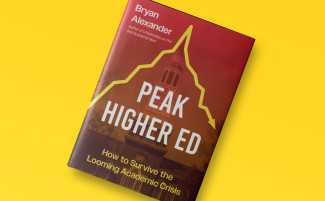
Johns Hopkins UniversityEst. 1876
America’s First Research University
An interview with author Sean Condon
 Several years ago, author Sean Condon and JHU Press editor Bob Brugger began discussing ideas for a book that would fit JHUP’s highly-regarded Witness to History series—short works meant to appeal to students through narrative accounts of important historical events. Since his arrival as a professor at Merrimack College, a small liberal arts college in New England, Condon had worked to integrate local and regional primary sources into his classes on early American history. Some of his most successful class sessions had involved discussions of documents related to Shays’s Rebellion, the 1786 uprising in central and western Massachusetts. Persuaded by these positive classroom experiences, Condon and Brugger agreed on a topic. The the result is Shays’s Rebellion: Authority and Distress in Post-Revolutionary America, published earlier this year.
Until he decided to write a narrative history of Shays’s Rebellion, Condon’s research had focused primarily on slavery in the post-Revolutionary period, but he found freedom in undertaking something new. After steeping one’s self in a single subject for a long time, Condon observed, it is easy to get bogged down in historiographical arguments and lose sight of a bigger picture. Working on this new topic, he could more clearly see the beginning, end, and big themes arising in his research and text. He also enjoyed writing in a style that students would appreciate, employing a narrative structure similar to how he would teach the subject in a class. The book’s opening passage, for example, reads:
Several years ago, author Sean Condon and JHU Press editor Bob Brugger began discussing ideas for a book that would fit JHUP’s highly-regarded Witness to History series—short works meant to appeal to students through narrative accounts of important historical events. Since his arrival as a professor at Merrimack College, a small liberal arts college in New England, Condon had worked to integrate local and regional primary sources into his classes on early American history. Some of his most successful class sessions had involved discussions of documents related to Shays’s Rebellion, the 1786 uprising in central and western Massachusetts. Persuaded by these positive classroom experiences, Condon and Brugger agreed on a topic. The the result is Shays’s Rebellion: Authority and Distress in Post-Revolutionary America, published earlier this year.
Until he decided to write a narrative history of Shays’s Rebellion, Condon’s research had focused primarily on slavery in the post-Revolutionary period, but he found freedom in undertaking something new. After steeping one’s self in a single subject for a long time, Condon observed, it is easy to get bogged down in historiographical arguments and lose sight of a bigger picture. Working on this new topic, he could more clearly see the beginning, end, and big themes arising in his research and text. He also enjoyed writing in a style that students would appreciate, employing a narrative structure similar to how he would teach the subject in a class. The book’s opening passage, for example, reads:
Several of the book’s themes recall key issues relevant in the United States from the founding of the country to the present day. While Condon clearly describes the economic and political circumstances revolving around the uprising in Massachusetts, he deliberately leaves the reader with pertinent and timely questions. What happens when very similar people are destructively pulled apart after differences emerge? How do ordinary Americans rise up in response to oppression and construct a significant movement of resistance? What are the repercussions of such acts? How can a rip in society be mended? While it is easy to sympathize with the rebellious farmers, Condon challenges his reader to also see Shays’s Rebellion from the perspective of the government officials, men of wealth and station. Condon found that writing the book helped focus his attention on questions of how we as Americans function in an increasingly polarized environment and how we can communicate with people with different views from ourselves. Shays’s Rebellion hits at the core the human tendency to define right and wrong, which is not limited to time or age. We need to look at facts and details of each case for ourselves, Condon observes, and use our own judgement to determine when rebellion is justified. In the words of Thomas Jefferson, “I hold that a little rebellion now and then is a good thing. . . . It is a medicine necessary for the sound health of government.” Now, if you’ve ever attempted to get a kid to take medicine, you might understand just how difficult it is to do the same on a national scale. Sean Condon is an associate professor and chair of the History Department at Merrimack College and the author of Shays’s Rebellion: Authority and Distress in Post-Revolutionary America. Natalie Guajardo is a senior English major at Goucher College and was a 2015 summer intern at JHU Press.On the morning of Tuesday, September 5, 1786, a crowd of approximately two hundred men marched through the streets of Worcester, Massachusetts, and headed for the courthouse. Some of the men marched with sticks or clubs, while others carried guns with bayonets fixed. Accompanied by fife and drum, the men paraded to the entrance of the courthouse, stopped, and waited. Later that morning, another procession made its way towards the courthouse, led by Worcester county sheriff William Greenleaf, followed by judges and a number of lawyers. These men were coming to open the scheduled session of the Court of Common Pleas, the lower court that met four times a year in each county of the Commonwealth of Massachusetts to handle civil cases like debt litigation. As the procession reached the courthouse, the crowd of men “opened to the right and left,” but six armed members of the crowd remained guarding the courthouse door, with their guns raised, preventing the sheriff and judges from entering.

